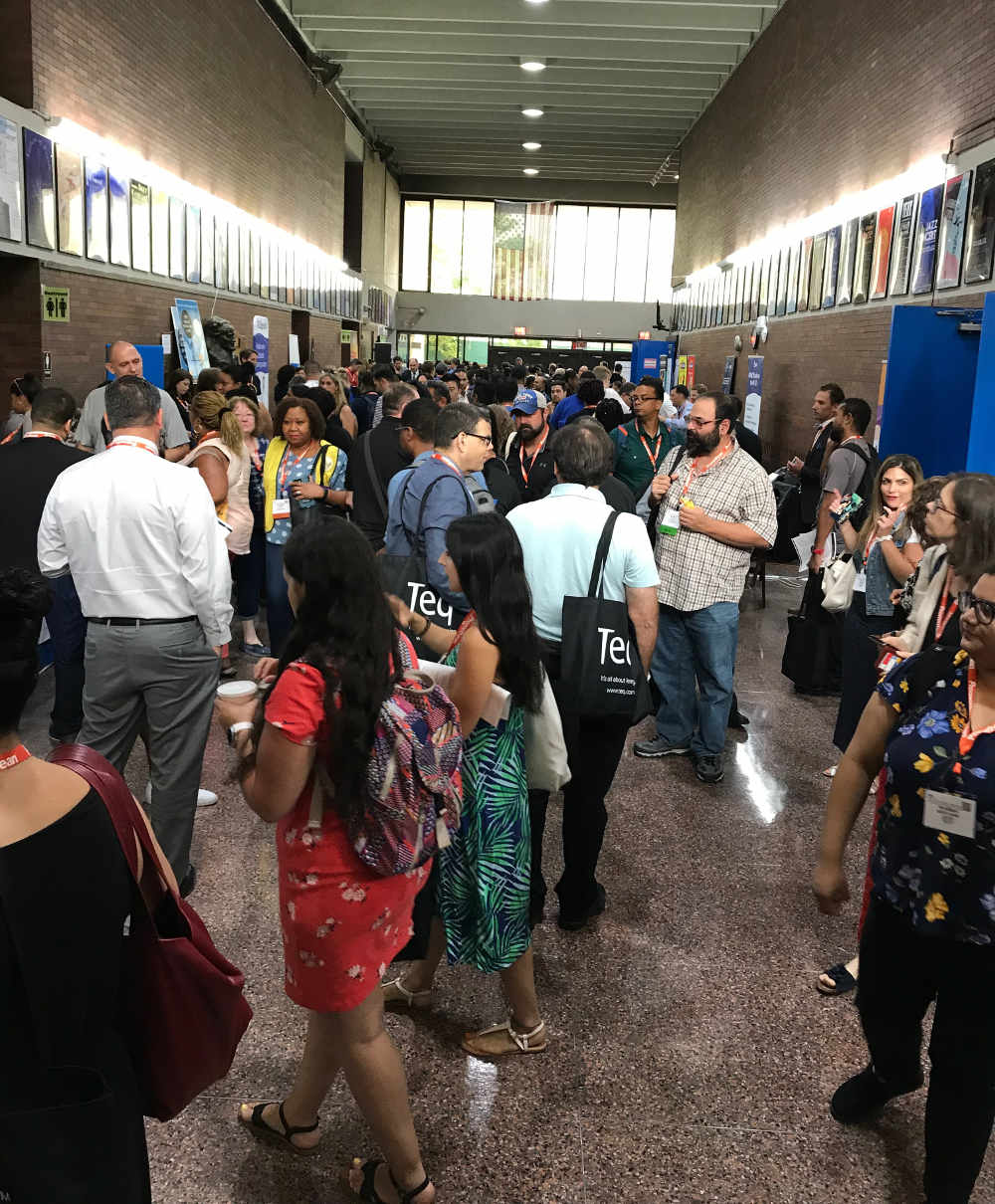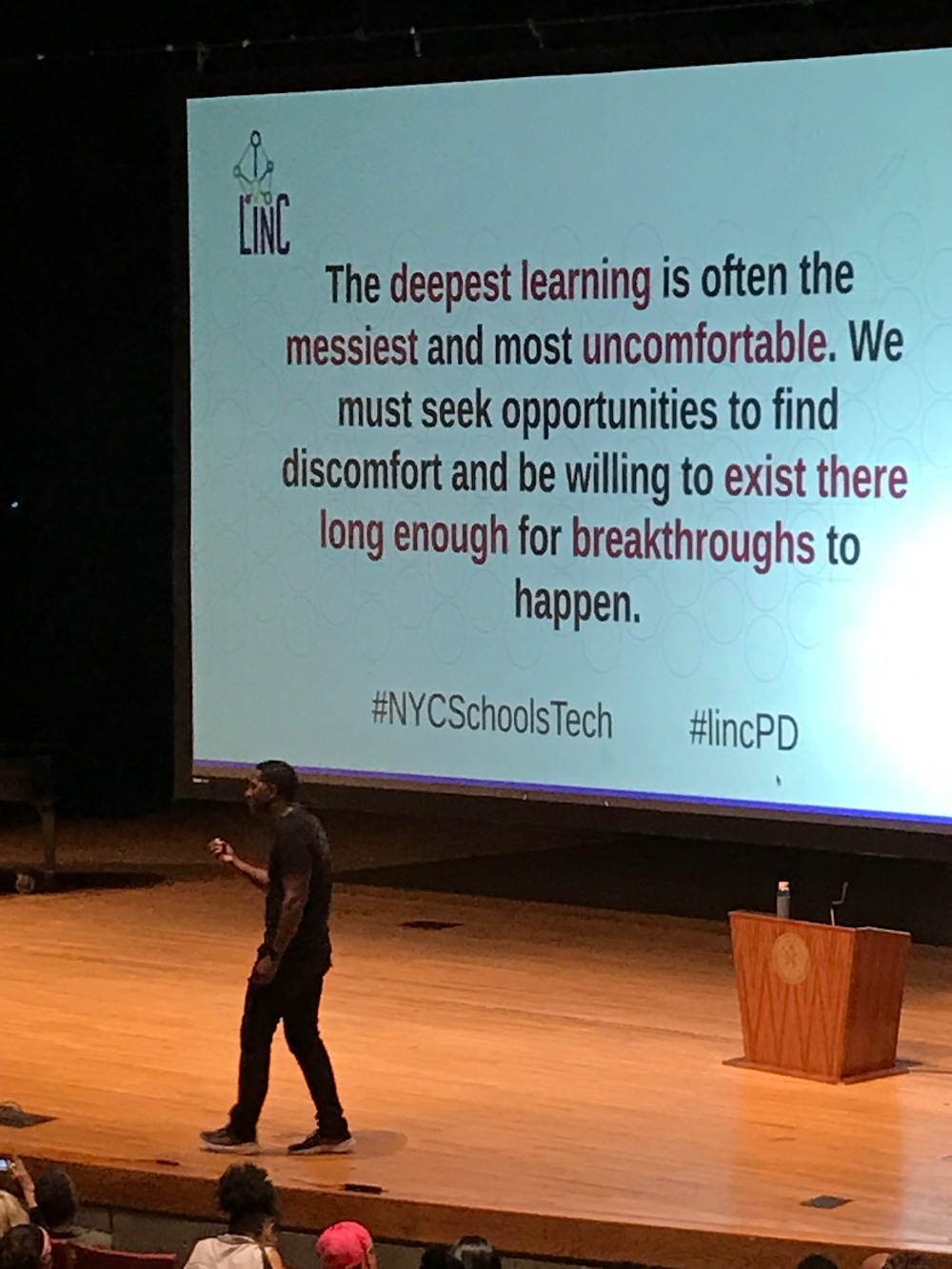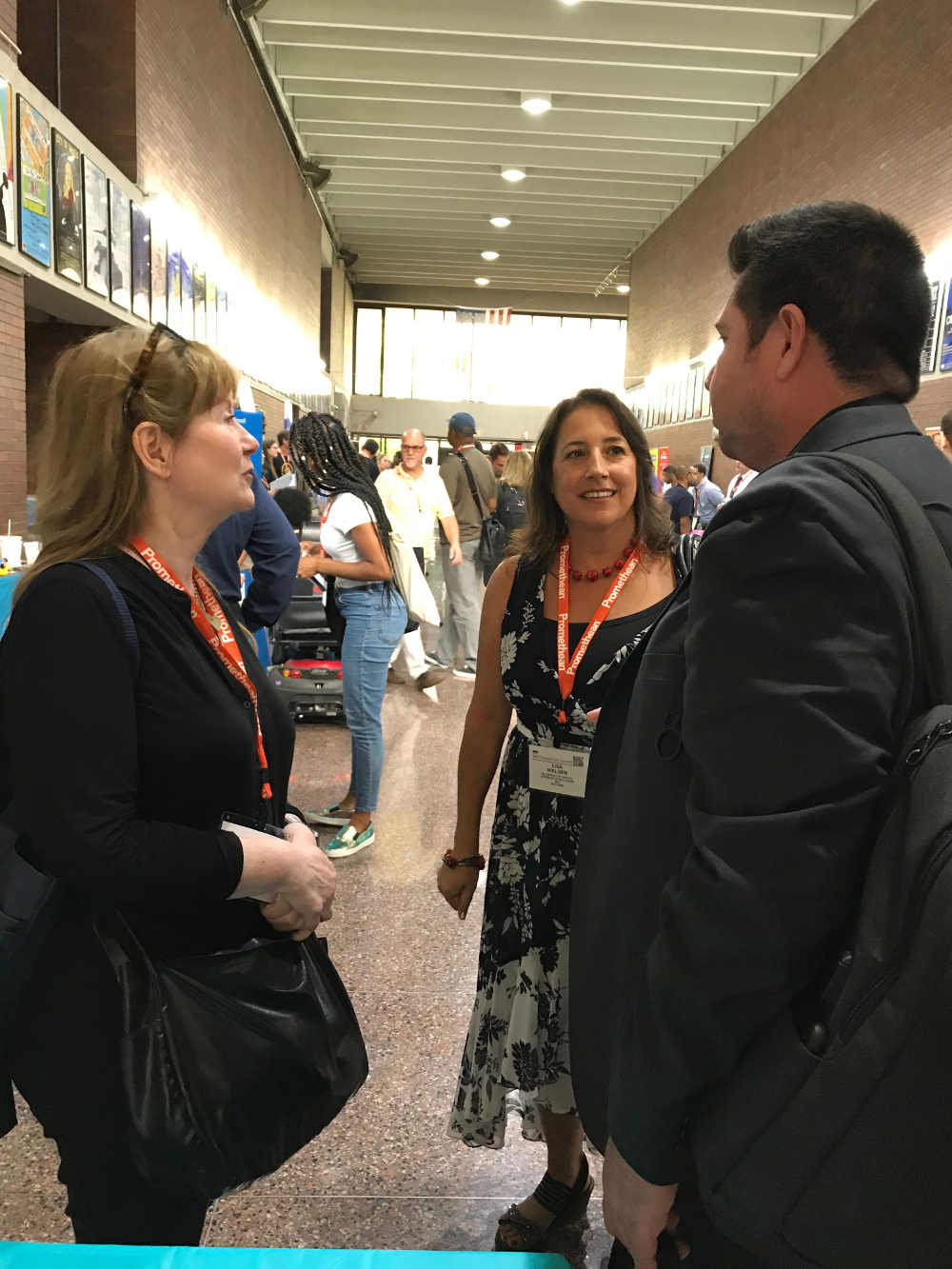#NYCSchoolsTech 2019 Conference Focuses on Digital Inclusion
“One out of every 300 Americans will attend a New York City school. Ensuring all of these students have access to technology is crucial. “ -- NYCDOE Chancellor Richard Carranza

“One out of every 300 Americans will attend a New York City school,” said NYCDOE Chancellor Richard Carranza (@DOEChancellor) in his opening welcome at the #NYCSchoolsTech Conference, held at Fiorello H. LaGuardia High School of Music & Art and Performing Arts (https://www.laguardiahs.org/ ) this week. “Ensuring all of these students have access to technology is crucial.“
This pledge was evident in the day’s robust program that focused on digital inclusion and kicked off with a spirited performance by the EPIC Players, a neuro-inclusive theatre company, performing the prologue to Little Shop of Horrors.
Victor Calise: Mayor’s Office of People with Disabilities
Victor Calise, the Commissioner of the Mayor’s Office of People with Disabilities shared that they are working to make New York City the most accessible city in the world. He told the audience that each and everyone of them needs to think about accessibility and how it affects us, our students, and their families. We can do this my ensuring people with disabilities are included.
There are two ways to ensure we include people with disabilities:
- Ensure we have truly inclusive education and inclusive classrooms:
We can do this through technology in classrooms. We must provide the technology tools that students need. - Include people with disabilities in the workforce:
79% of people with disabilities are jobless. It is the job of schools and educators to help prepare students who can be employed.

Keynote: Jason Green
The program kicked off with a keynote from Jason Green, CEO of Learning Innovation Catalyst (LINC) and author of Blended Learning in Action. Mr. Green asked the audience of about 1,000 New York educators about their own experiences with learning, and noted that “most teachers model their classrooms not by how they learned, but by how they were taught.”
“Your students might be the first generation to never finish college,” he said. How do schools prepare this new generation for jobs that don’t yet exist? He outlined three key elements:
- Teachers must become the 21-century learners they are trying to create
He noted that most professional development models don’t work, and highlighted the Stanford “model of generative change” (https://edpolicy.stanford.edu/library/publications/93 ) that outlines a PD timeline to help teachers become agents of change. - Teachers must create classrooms where students love learning.
To achieve this, Mr. Green recommended the “PAACC” approach that includes: Personalization; Agency, Authentic audience; Connectivity; and Creativity. - Schools must become cultural catalysts for change
He suggested these tenets to help change school community cultures: Equity; Trust; Agency; Collaboration; and Risk taking. He asked the audience: how are you embracing these tenets? Do you invite colleagues to visit your classroom? Do you visit theirs?
Breakout Sessions
The dozens of breakout sessions throughout the day offered deep dives on a multitude of topics, many with a focus on how to support digital inclusion. Each session included links to helpful resources. There were classes for those starting their journey like “Get Going with Digital Accessibility & Inclusion” and “My Journey to an Inclusive Website.” There were also workshops for those ready to dig in and begin creating inclusive content such as “Writing for Effective Translation” and “Having a Broader Vision for Screen Readers. There were also workshops from Google, and Microsoft on how to “DigIn to Accessibility.” You can view all the #NYCSchoolsTech Summit agendas and resources on the tabs in the Summit “Workshops at a Glance.”
Tech & Learning Newsletter
Tools and ideas to transform education. Sign up below.
NYCDOE Walks the Walk
I had the pleasure of talking to staff members of the Office of Digital Communication and Inclusion including John Kirkwood, Digital Inclusion Director, Nica Lalli, Senior Director of Digital Communications, and Patty Paddock, Director of Digital Communications and Inclusion, about New York City DOE’s digital inclusion initiative.
After entering into an agreement with the United States Department of Education, Office for Civil Rights in 2016, the New York City Department of Education vowed to create a fully accessible website. This spurred intense research by the department as they figured out what it would mean to make their website accessible.
Offering accessible websites has been an ADA requirement since 2008, but until recently, most agencies hadn’t held public institutions accountable. The NYCDOE knew they had an obligation to change that not just for their own schools, but to become a model for other districts around the country.
“To achieve accessibility, we must think digitally,” said Nica Lalli. Once content is digital it can be accessed by screen readers, translated, captioned, and much more. This it is why it is important that we inspire and teach staff how to make content that is digitally accessible to those with a wide range of disabilities.
The Office of Digital Inclusion helps staff learn to create digital content with these three easy ways to get started:
Make sure your content is written…
- at a grade 6–9 reading level
- find out the reading level at Tinyurl.com/MSReadingLevel
- use short sentences and common, everyday words
Check to see if you have...
- headings (formatted from a style ribbon)
- bulleted lists
- descriptive hyperlinks (no "click here")
- proper contrast
- contact information
Give all of your images…
- alternative text (alt text)

Once the district launched the accessible website, they began teaching staff at central, districts, and schools about how to create digitally inclusive content.
“We need to embed accessibility into everything we offer,” Mr. Kirkwood said. The district is using school webmasters who are often a school’s Technology Single Point of Contact (SPOC) or Parent Coordinator to help them learn how their school community can digitally inclusive. “We want to change the cultural mindset around accessibility,” he continued.
“Once you start down the road of accessibility, you will keep going down that road,” said Ms. Lalli. “We’re okay dong this slowly, as long as we keep moving.”
The NYCDOE has generously assembled Digital Accessibility and Inclusion guidance that any district can use: Schools.nyc.gov/DigitalInclusion.
Special Thanks
Special thanks to Lisa Nielsen, Senior Director Digital Literacy and Inclusion, Jane Pook, Chief Digital Communications Officer, and to JoJo Farrell, Ed Tech Program Manager, for their hospitality throughout the conference.
It was inspiring to see a district the size of New York City not just take on the complex issue of digital inclusion, but also position itself as a model to districts of all sizes around the country.
Christine Weiser is the Content and Brand Director for Tech & Learning, and has been with the company since 2008. She has reported on education for most of her career, working at Scholastic and Gale Publishing before joining Tech & Learning. Christine is also an author and musician, and lives in Philadelphia with her husband and son.



